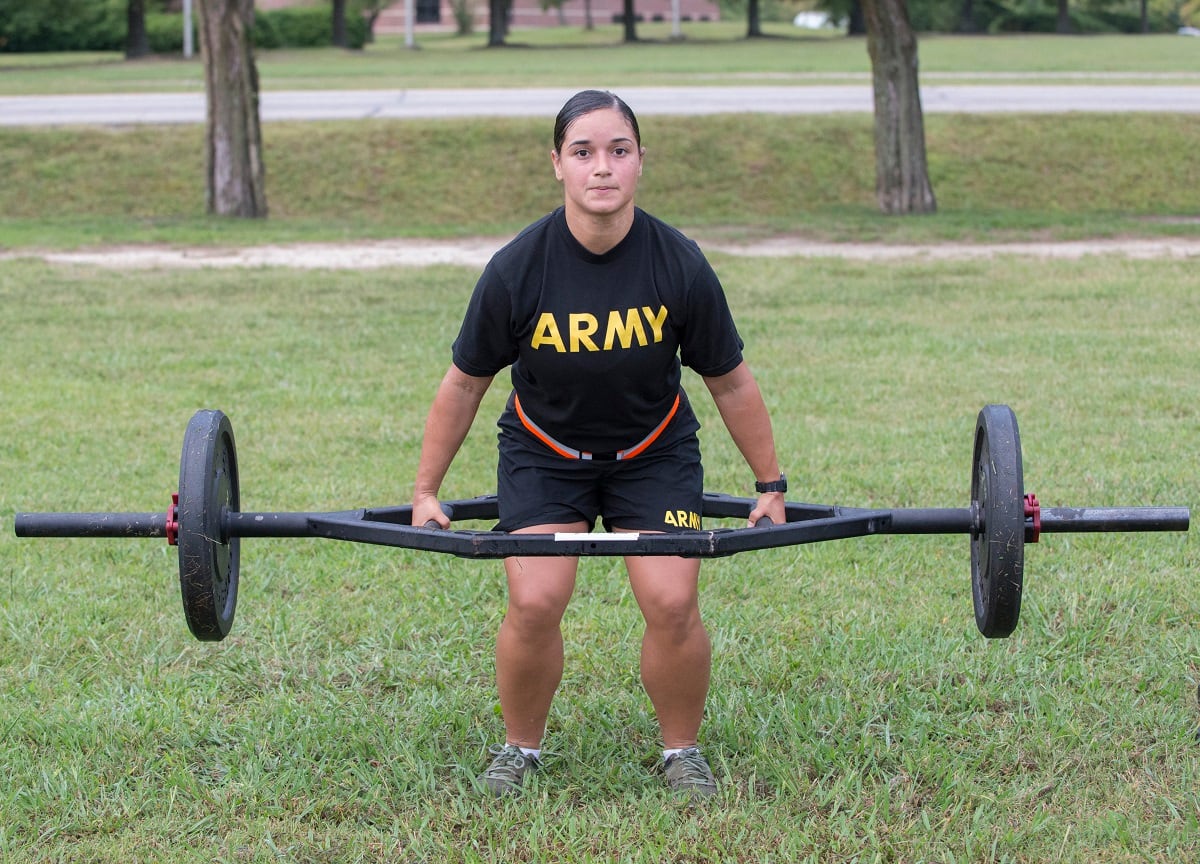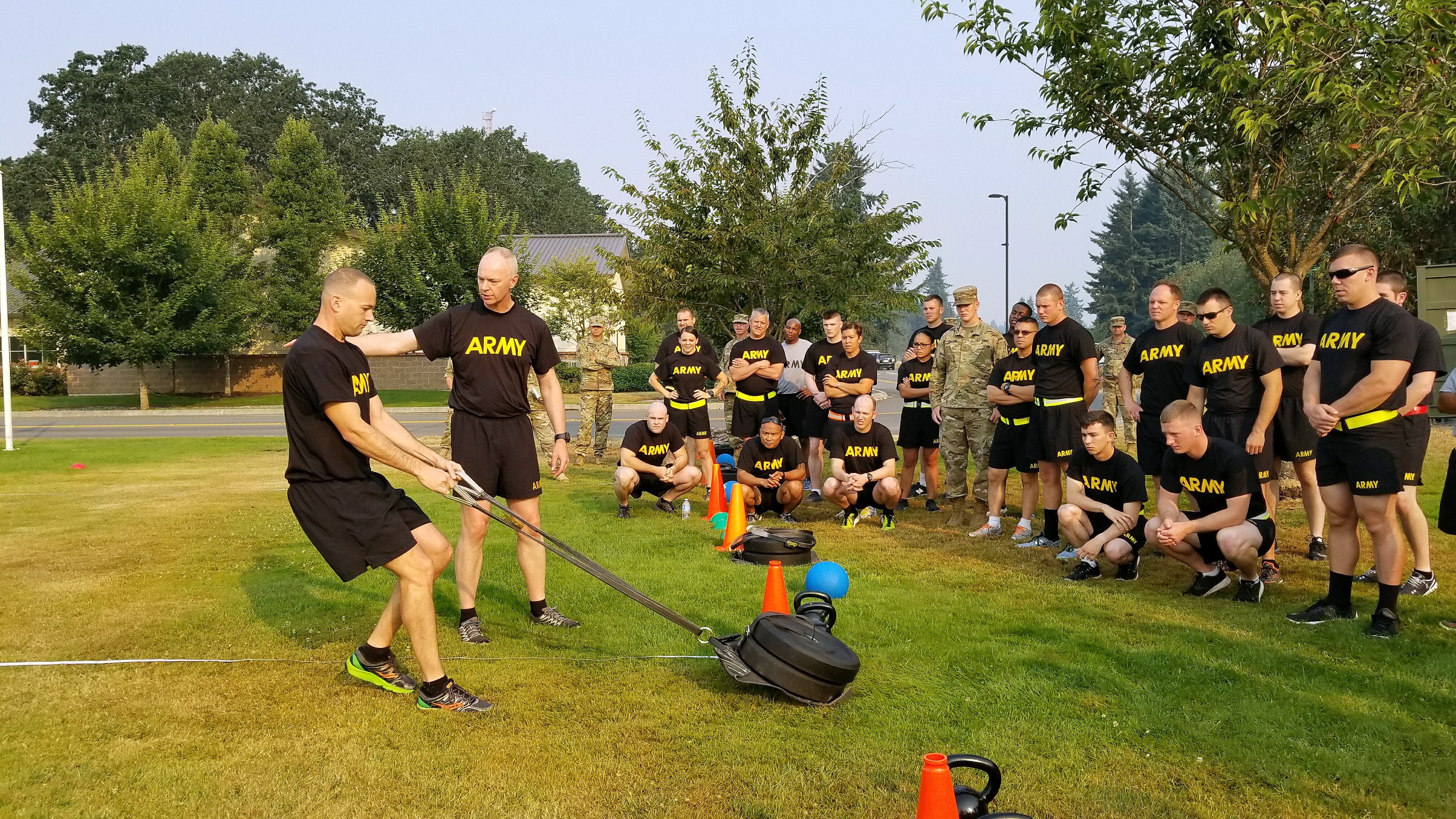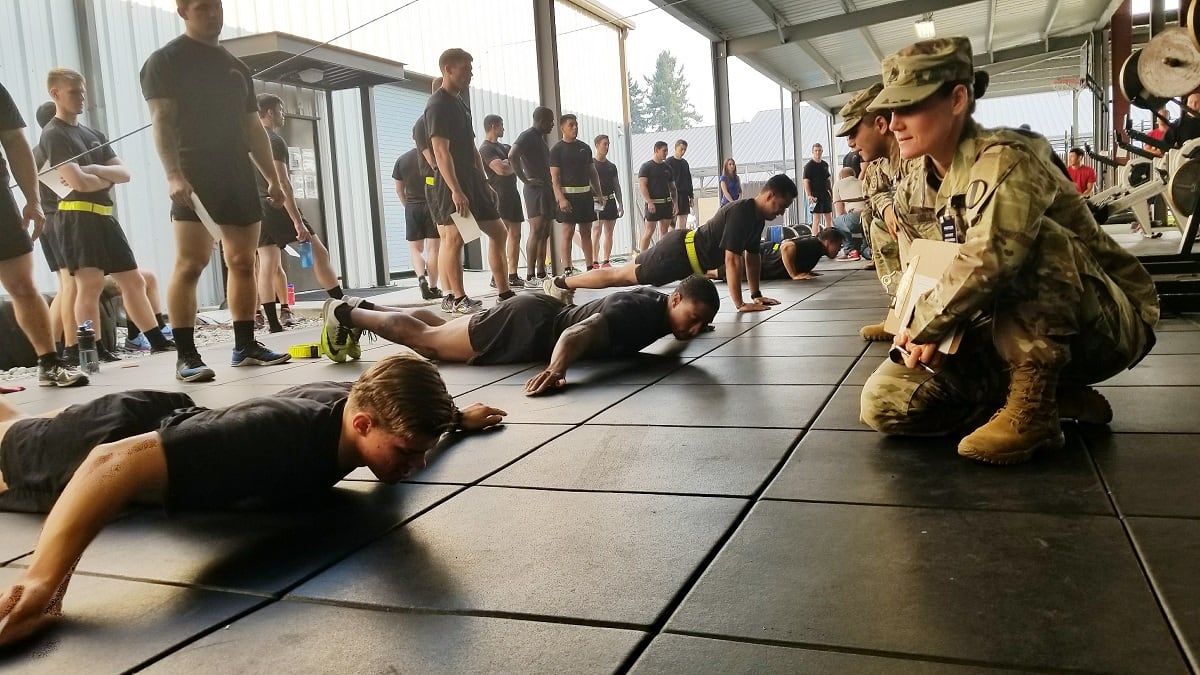The new Army Combat Fitness Test is one of the Army’s most discussed topics. Being good journalists, the folks at Army Times went looking for an “expert” to weigh in on the new test.
They couldn’t find one, so they got me instead.
Without further ado, I offer my three main reasons why we all should be pumped about this new test.
1. The death of situps
Let’s be honest: Is anyone going to miss the vertebrae-jarring spastic race to slam our backs into the ground as many times as possible in two minutes? Didn’t think so.
It is time to say goodbye to sore backs caused by blunt force trauma and hello to exercises that both truly test and build the core.
2. Hail to the king
The new test brings us the “king of exercises” — the deadlift.
Want a strong core and lower body? Deadlift. Want to build muscle and strength? Deadlift. You get the point.
For those who say the king will hurt more backs than the situps, I counter with this:
• This is a trap-bar deadlift, not a conventional barbell deadlift, so the loading is more proximal (close to the torso) than distal (far from the torso). This means less stress on the lower back.
• As pointed out by Sergeant Major of the Army Dan Dailey, every time you pick up a litter, an ammo can, etc., you are doing a deadlift. So logically training for what you do daily is most likely to prevent injuries, not cause them.

3. Sprint. Drag. Carry. Love.
Out of all the assessments on the new test, the sprint-drag-carry is the only one I’d never done. In the name of accurate reporting, I gave it a try and will describe my experience performing what I’ll forever call “the baby giraffe”:
• During the sprint portion, I feel like a lion on the Serengeti, chasing a gazelle.
• In the final 25 meters of the drag, my quads start filling with blood. I’m running with two over-packed water balloons … and when I pick up the kettlebells for the carry portion, I notice my legs are feeling a little shaky.
• In the last sprint, it happens: I go from lion to baby giraffe. I spend all my focus on keeping my legs churning in the right direction.
When I finished, my heart was pounding and my legs were burning …. and I knew I was in love. The event is a sprinting, dragging, lifting, hydrogen-ion-producing party that definitely will test your anaerobic conditioning.

A run to greatness
For those who pointed out that the proposed 20-minute cutoff for the two-mile run is a bit … pedestrian … I caution not to rush to judgment. After some self-experimentation, I can say that running two miles fresh does not feel the same as running two miles after these events (see “baby giraffe,” above).
RELATED

For the two people who sometimes read my pro-speed, pro-sprint ramblings and are wondering my thoughts about the two-mile run serving as the new test’s final event: This test is such a complete upgrade from the old one that complaining about the run would be like going from a Geo Metro to a Ford Mustang Cobra and complaining about the factory rims on the Cobra — you just don’t do it. Instead, you strap in, push the ignition, and enjoy the ride.
The new test — and, more importantly, the training that will come with it — will change the shape of the Army for the better.
I hope all soldiers, even those who are little scared, embrace the training and enjoy the new ride.

Nick Barringer is an Army officer who works in the field of nutrition and human performance.




